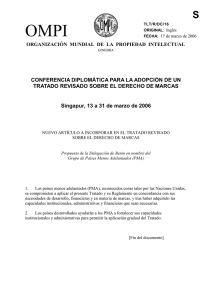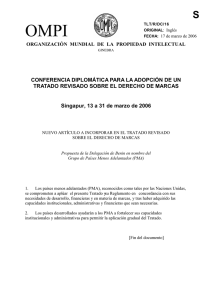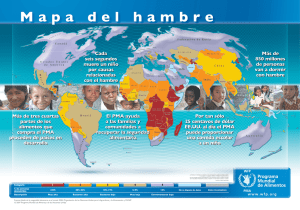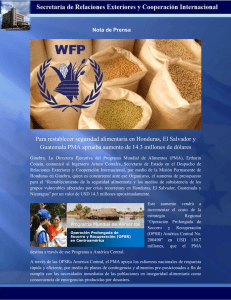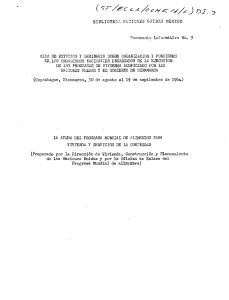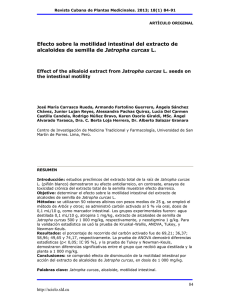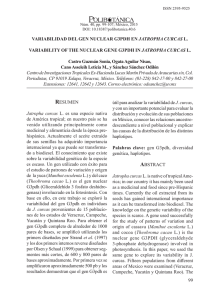DESINTOXICACIÓN DE LA TORTA DE Jatropha curcas L. COMO
Anuncio
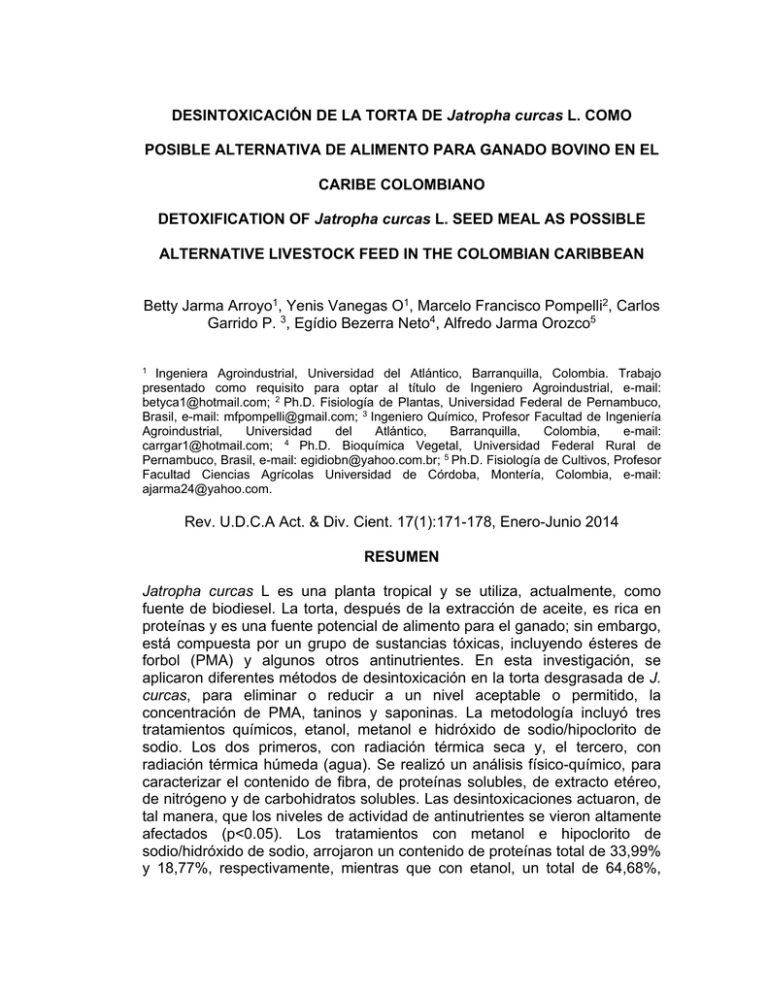
DESINTOXICACIÓN DE LA TORTA DE Jatropha curcas L. COMO POSIBLE ALTERNATIVA DE ALIMENTO PARA GANADO BOVINO EN EL CARIBE COLOMBIANO DETOXIFICATION OF Jatropha curcas L. SEED MEAL AS POSSIBLE ALTERNATIVE LIVESTOCK FEED IN THE COLOMBIAN CARIBBEAN Betty Jarma Arroyo1, Yenis Vanegas O1, Marcelo Francisco Pompelli2, Carlos Garrido P. 3, Egídio Bezerra Neto4, Alfredo Jarma Orozco5 1 Ingeniera Agroindustrial, Universidad del Atlántico, Barranquilla, Colombia. Trabajo presentado como requisito para optar al título de Ingeniero Agroindustrial, e-mail: [email protected]; 2 Ph.D. Fisiología de Plantas, Universidad Federal de Pernambuco, Brasil, e-mail: [email protected]; 3 Ingeniero Químico, Profesor Facultad de Ingeniería Agroindustrial, Universidad del Atlántico, Barranquilla, Colombia, e-mail: [email protected]; 4 Ph.D. Bioquímica Vegetal, Universidad Federal Rural de Pernambuco, Brasil, e-mail: [email protected]; 5 Ph.D. Fisiología de Cultivos, Profesor Facultad Ciencias Agrícolas Universidad de Córdoba, Montería, Colombia, e-mail: [email protected]. Rev. U.D.C.A Act. & Div. Cient. 17(1):171-178, Enero-Junio 2014 RESUMEN Jatropha curcas L es una planta tropical y se utiliza, actualmente, como fuente de biodiesel. La torta, después de la extracción de aceite, es rica en proteínas y es una fuente potencial de alimento para el ganado; sin embargo, está compuesta por un grupo de sustancias tóxicas, incluyendo ésteres de forbol (PMA) y algunos otros antinutrientes. En esta investigación, se aplicaron diferentes métodos de desintoxicación en la torta desgrasada de J. curcas, para eliminar o reducir a un nivel aceptable o permitido, la concentración de PMA, taninos y saponinas. La metodología incluyó tres tratamientos químicos, etanol, metanol e hidróxido de sodio/hipoclorito de sodio. Los dos primeros, con radiación térmica seca y, el tercero, con radiación térmica húmeda (agua). Se realizó un análisis físico-químico, para caracterizar el contenido de fibra, de proteínas solubles, de extracto etéreo, de nitrógeno y de carbohidratos solubles. Las desintoxicaciones actuaron, de tal manera, que los niveles de actividad de antinutrientes se vieron altamente afectados (p<0.05). Los tratamientos con metanol e hipoclorito de sodio/hidróxido de sodio, arrojaron un contenido de proteínas total de 33,99% y 18,77%, respectivamente, mientras que con etanol, un total de 64,68%, dejando una torta con un nivel aceptable, de acuerdo con los requisitos exigidos para la alimentación de ganado. La reducción en el contenido de PMA en las muestras fue exitoso; las desintoxicaciones con metanol, hidróxido de sodio/hipoclorito de sodio, redujeron el contenido final en un porcentaje de 99,80% y 99,85%, respectivamente; no obstante, la desintoxicación con etanol dio un estricto valor de 99,96%, caracterizándose como la mejor opción. Palabras clave: Ésteres de forbol (PMA), antinutrientes, piñón manso, agroindustria. SUMMARY Jatropha curcas L. is a tropical plant presently used as a source of biodiesel; the cake, after oil extraction is rich in protein and is a potential source for livestock feed. However, this resultant cake is compound by a group of toxic substances, including phorbol esters (PMA), and some other antinutrients. In this investigation, were applied different methods of detoxification on the defatted cake of J. curcas using three chemical treatments, ethanol, methanol (both with dry thermal radiation), and sodium hydroxide / sodium hypochlorite with wet thermal radiation (water) to eliminate or reduce to a tolerable and permissible level the concentration PMA, tannins, and saponins. A physicalchemical analysis was performed to characterize the fiber content, soluble protein, lipids, nitrogen and soluble carbohydrates. The detoxification acted in a way that the activity levels of anti-nutrients were highly affected (p<0.05). Treatments with methanol and sodium hydroxide/sodium hypochlorite showed a low percentage on the protein content, 33.99% and 18.77% respectively, while the detoxification with ethanol reduced to 64.68%, leaving a cake in a highly acceptable level, according to the requirements for livestock feed. The reduction on the content of PMA in the samples was also successful; detoxified samples with methanol and sodium hydroxide/sodium hypochlorite, reduced the final content by a percentage of 99.80 % and 99.85% respectively, while detoxification with ethanol gave a strictest value of 99.96%, leaving this latter as the best option again. Keywords: Phorbol esters (PMA), antinutrients, purging nut, agribusiness.
